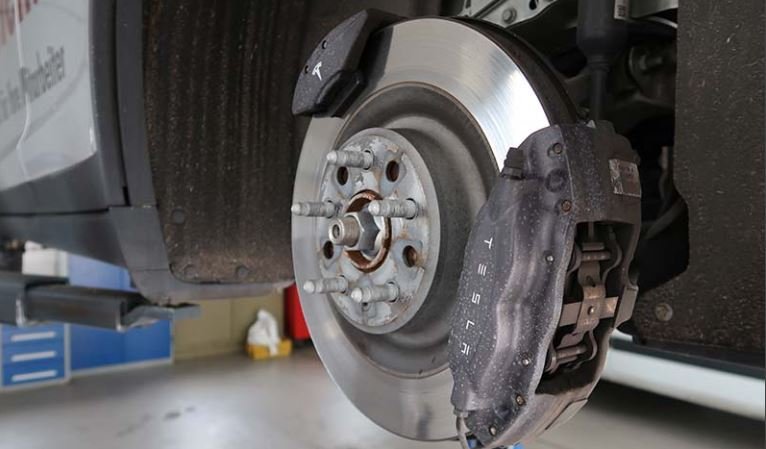Electric car brakes differ significantly from those in traditional internal combustion vehicles. Understanding these differences helps ensure proper maintenance and effective braking performance for electric vehicles (EVs). This guide explores the key aspects of electric car brakes, including their types, benefits, and maintenance tips.

1. Regenerative Braking
Regenerative braking is a distinctive feature of electric vehicles. Unlike traditional braking systems that rely solely on friction, regenerative braking captures and converts the vehicle’s kinetic energy into electrical energy, which recharges the battery. This process not only improves efficiency but also extends the vehicle’s range.
2. How Regenerative Braking Works
When the driver releases the accelerator or applies the brakes, the electric motor switches to generator mode. This mode converts kinetic energy into electrical energy, which is then fed back into the battery. Regenerative braking slows down the vehicle while simultaneously recharging the battery, enhancing overall efficiency.
3. Traditional vs. Regenerative Braking
While regenerative braking is highly efficient, electric vehicles also use traditional friction brakes for additional stopping power. The friction brakes consist of conventional brake pads and rotors that work alongside regenerative braking to provide complete braking capabilities, especially during hard stops or when regenerative braking alone is insufficient.
4. Brake Pad Wear in Electric Vehicles
Electric vehicles often experience different brake pad wear patterns compared to traditional vehicles. Since regenerative braking reduces the reliance on friction brakes, brake pads in EVs typically last longer. However, regular inspections are still necessary to ensure optimal performance and safety.
5. Maintenance of Electric Car Brakes
Maintaining electric car brakes involves regular checks of both the regenerative and traditional braking systems. Ensure that brake pads are in good condition and replace them as needed. Additionally, monitor the brake fluid levels and look out for any signs of brake wear or malfunction.
6. Brake Fluid in Electric Vehicles
Electric vehicles use brake fluid just like traditional vehicles. Regularly check the brake fluid levels and ensure they meet manufacturer specifications. Proper maintenance of brake fluid is essential for maintaining effective braking performance and preventing potential issues.
7. Advantages of Regenerative Braking
Regenerative braking offers several benefits, including:
- Improved Efficiency: By converting kinetic energy into electrical energy, regenerative braking enhances overall vehicle efficiency and extends range.
- Reduced Brake Wear: Less reliance on friction brakes leads to slower wear and tear of brake pads, resulting in lower maintenance costs.
- Enhanced Control: Regenerative braking provides smooth deceleration and can assist in maintaining vehicle control during braking.
8. Challenges with Electric Car Brakes
Despite their advantages, electric car brakes face certain challenges:
- Complexity of Regenerative Systems: The integration of regenerative braking systems can add complexity to the vehicle’s braking setup, requiring specialized maintenance and repairs.
- Brake Pedal Feel: The transition between regenerative and friction braking can sometimes affect the feel of the brake pedal, potentially leading to driver adaptation challenges.
9. Upgrading Electric Car Brakes
Upgrading brake components in electric vehicles can enhance performance and safety. Consider high-performance brake pads or rotors if you drive in demanding conditions or require improved stopping power. Ensure that any upgrades are compatible with the vehicle’s braking system and meet safety standards.
10. Professional Brake Inspections
Regular professional inspections of your electric vehicle’s braking system are crucial for ensuring safety and optimal performance. Qualified technicians can accurately assess both regenerative and friction braking systems, identify potential issues, and perform necessary repairs or maintenance.
Conclusion
Electric car brakes combine innovative regenerative braking technology with traditional friction brakes to provide efficient and effective stopping power. Understanding the unique aspects of electric vehicle braking systems, including maintenance and upgrade options, ensures that your vehicle operates safely and efficiently. Regular inspections and proper care of both regenerative and friction brakes help maintain optimal performance and extend the life of your braking system.




